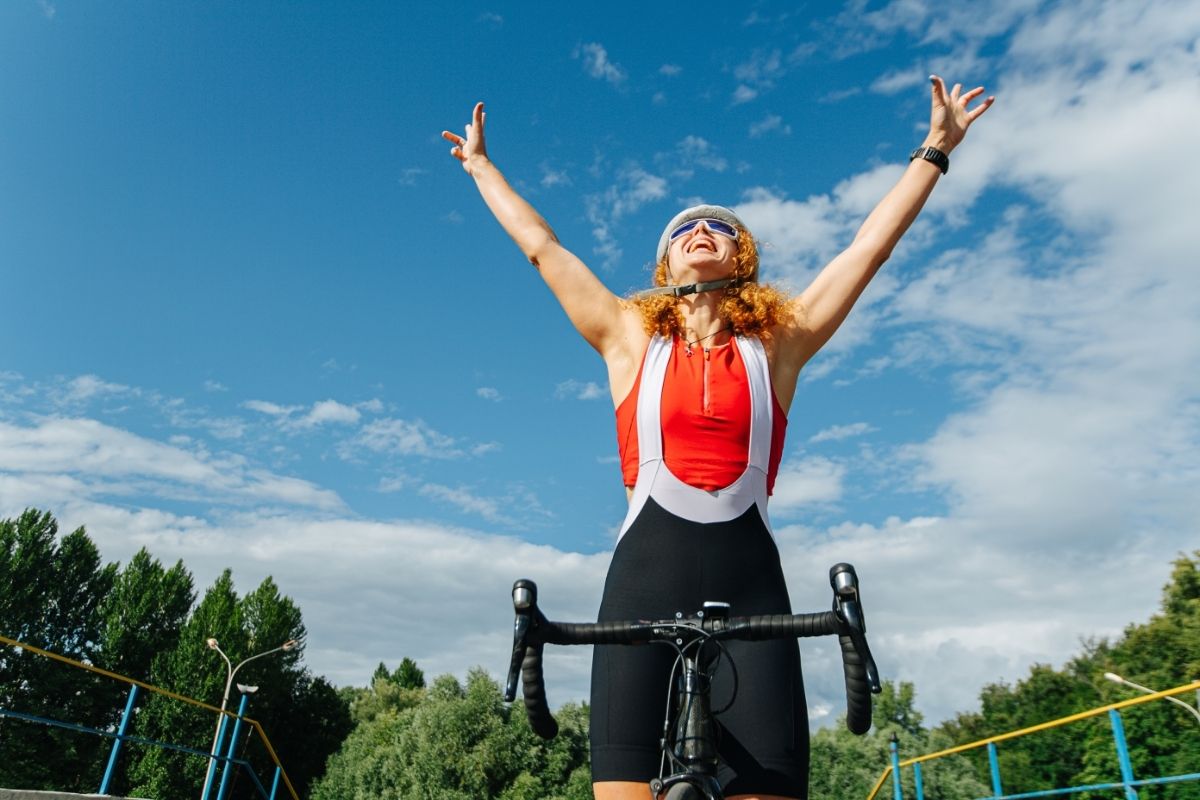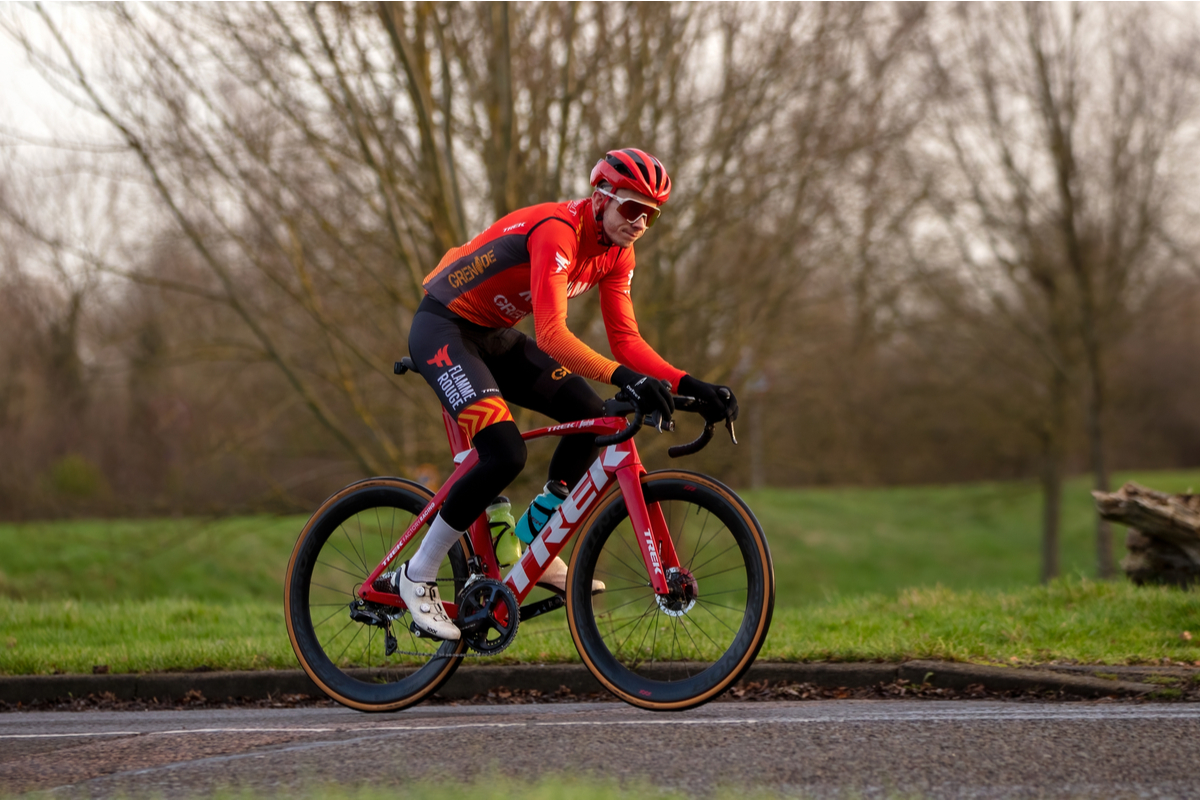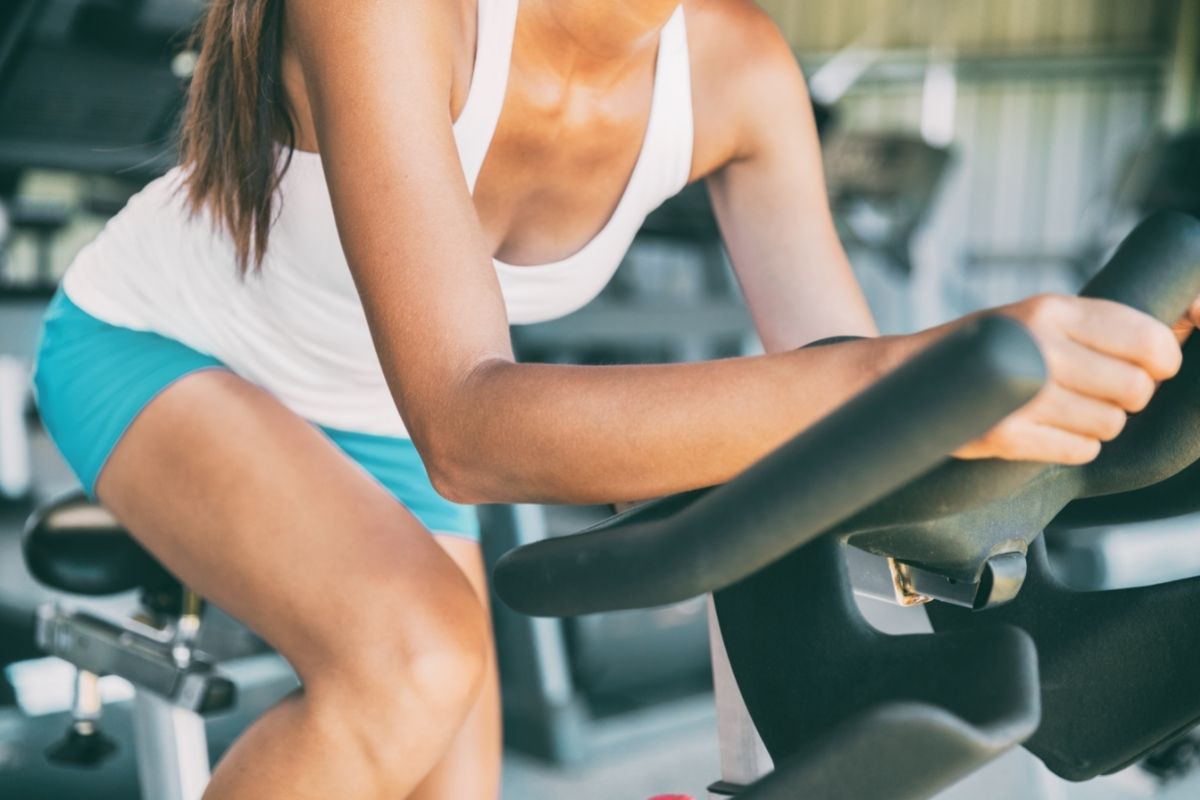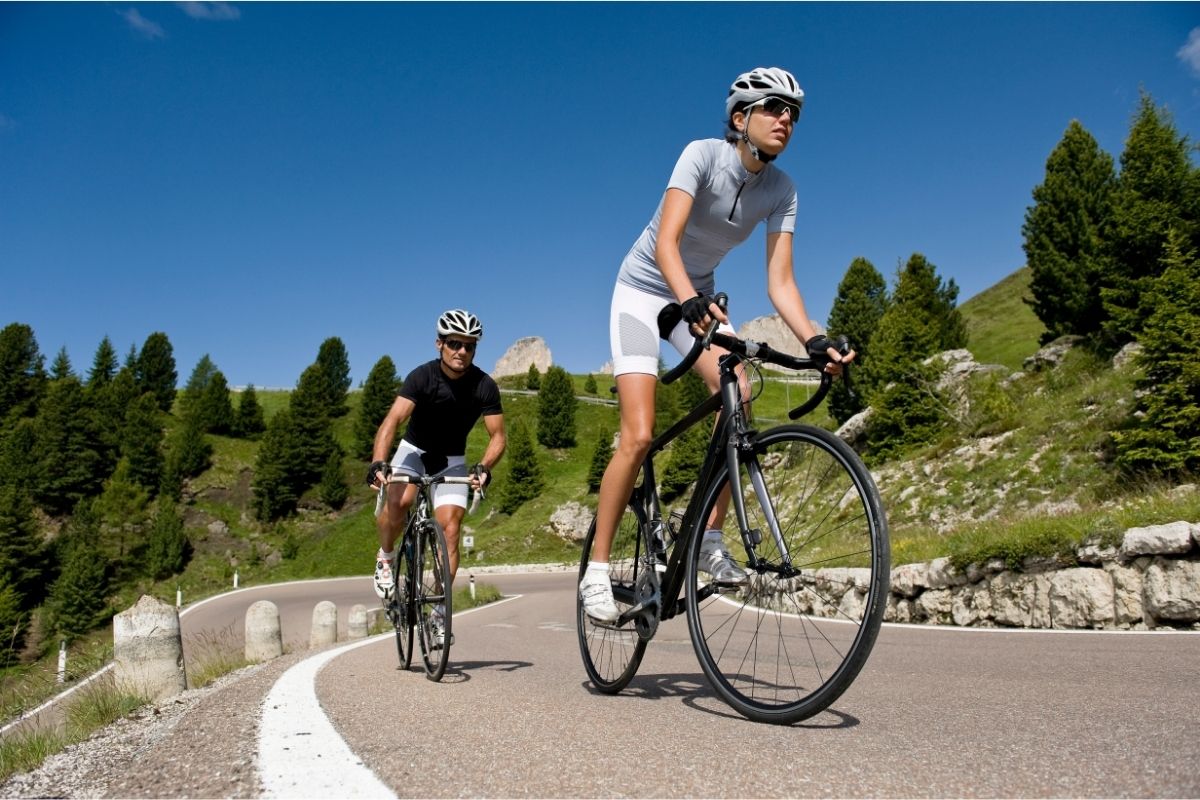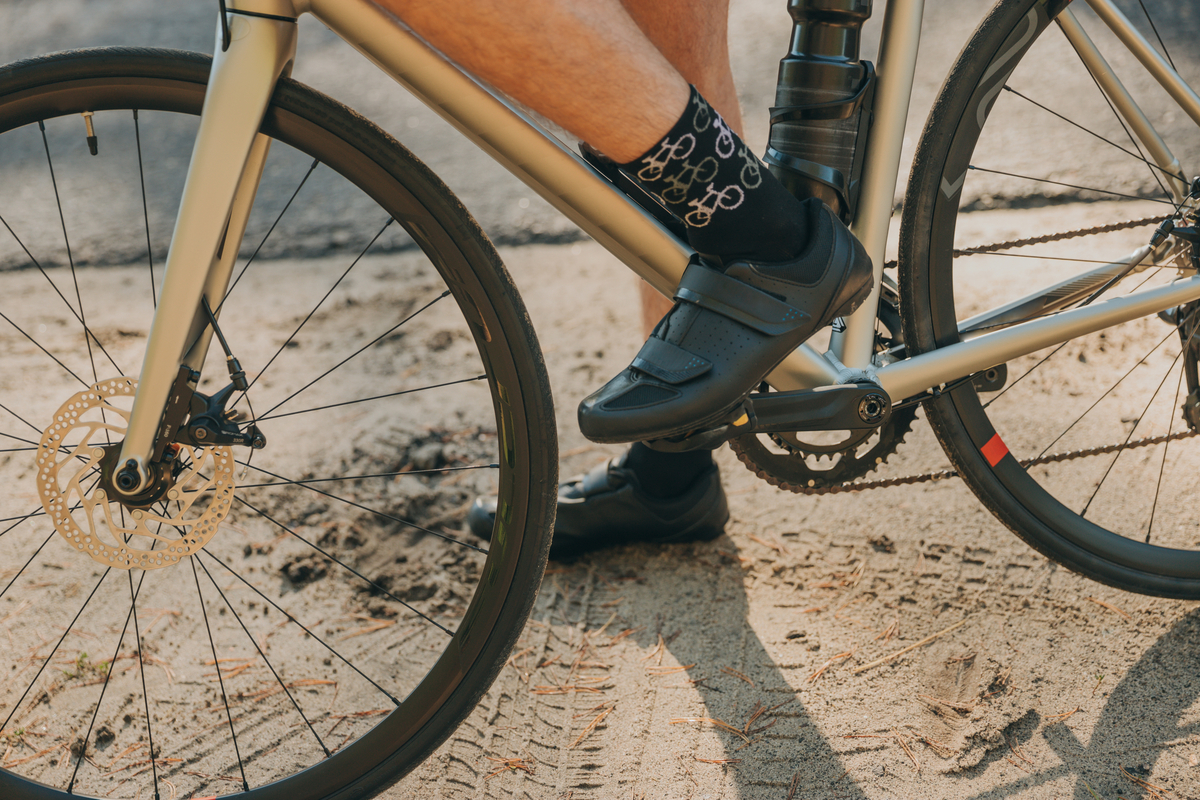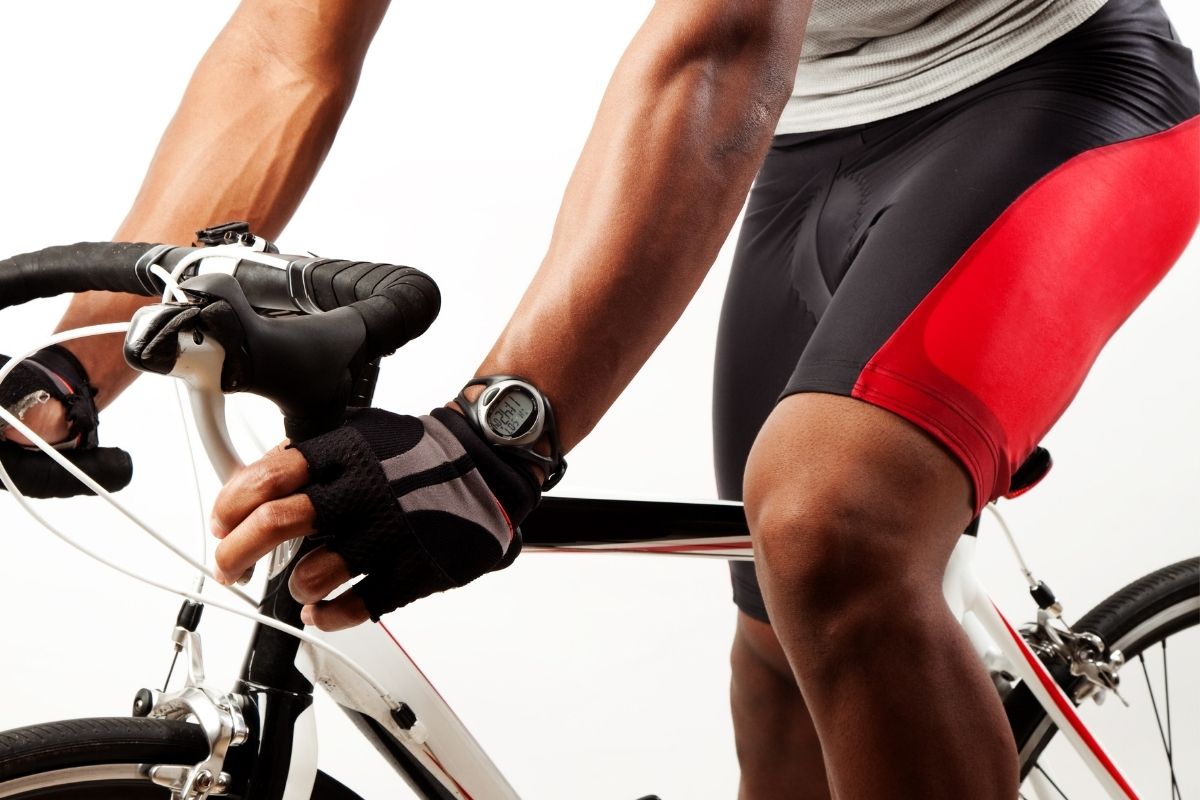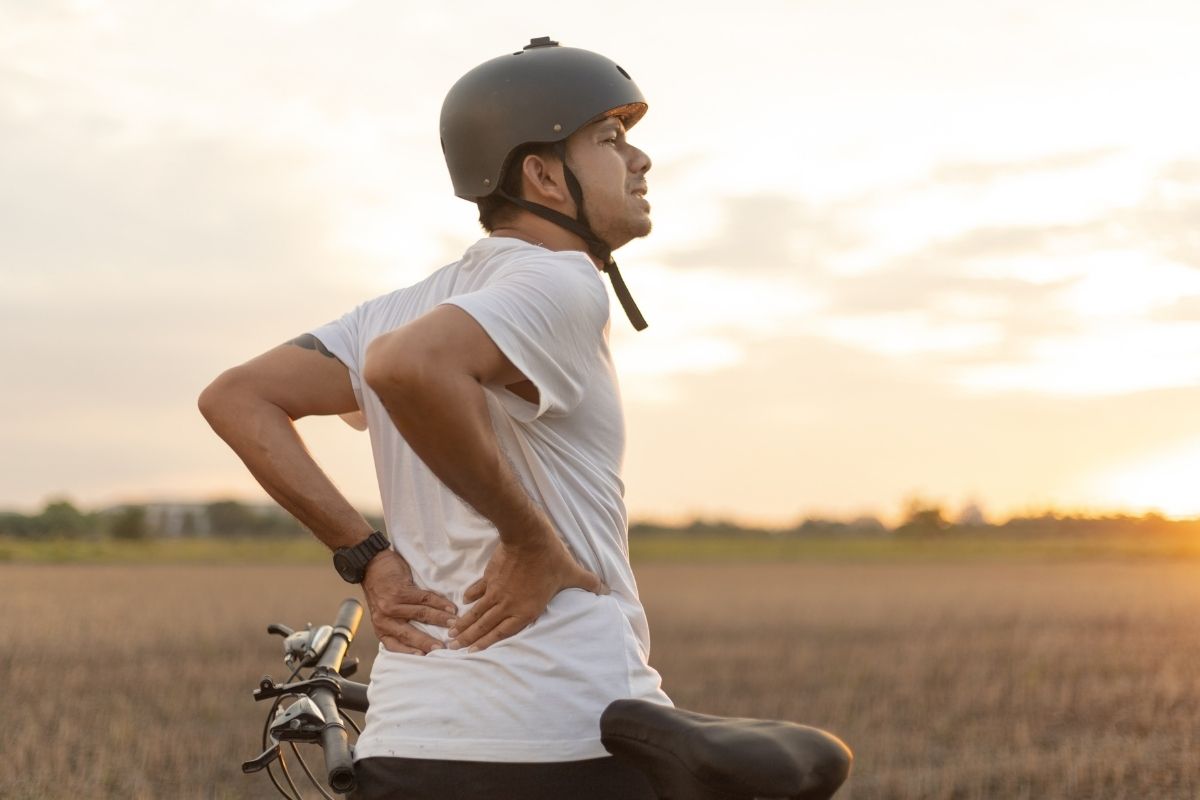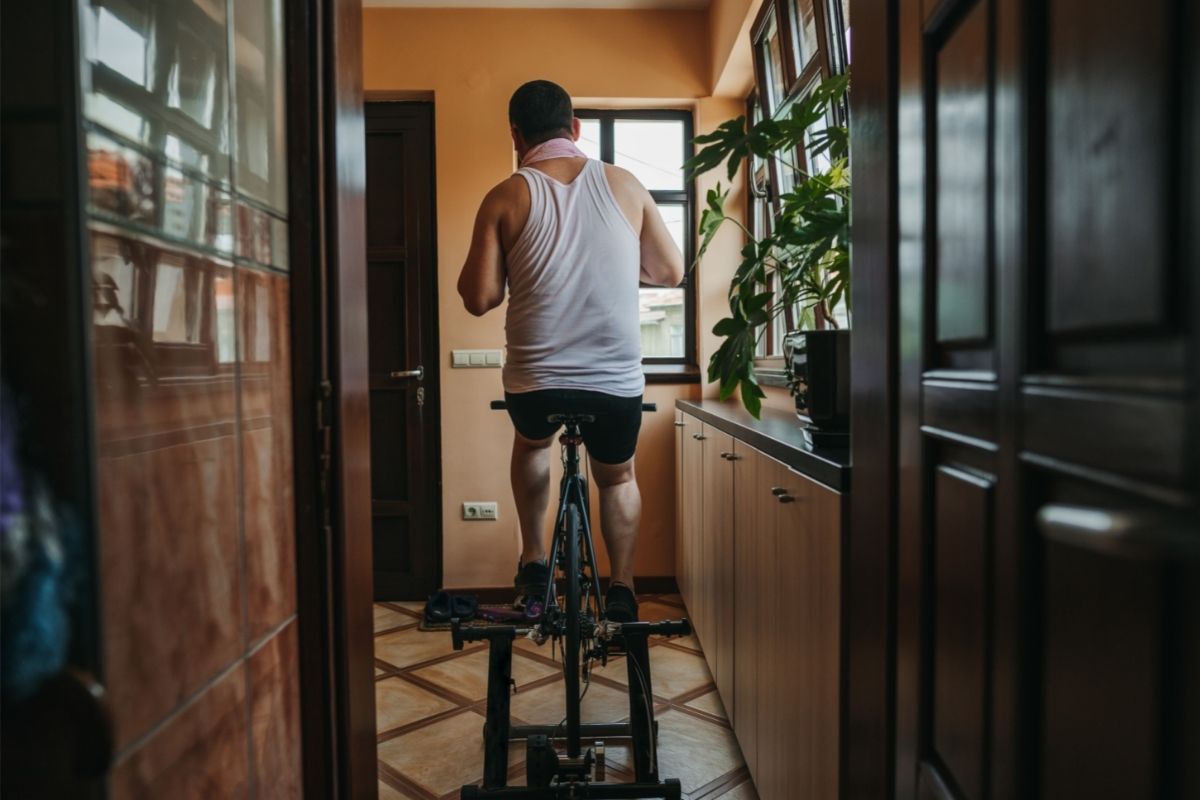If you have ever seen a cyclist ride past you in their lycra gear, you may have noticed how skinny they tend to be.
Professional cyclists and those that cycle regularly typically have very slender frames. But, don’t let this fool you. Many are extremely fit and boast impressively strong leg muscles.
Try and cycle a few miles up a hill and you will probably realize how much strain it puts on the lower half of the body.
For all the muscles cyclists have in their legs, their upper bodies rarely match the muscular tone. Here, their muscle development seems to lag behind with many professional cyclists looking extremely skinny.
The majority of road cyclists have narrow, thin backs, and very flat chests. Try and find excess weight here and you will struggle.
But, it’s their arms that are often extremely skinny. This is usually more noticeable as their jerseys don’t always cover this portion of the body. This leaves many people asking the question – why are cyclists so skinny, especially their arms?
In today’s article, we will be finding out why cyclists are generally a very skinny bunch. We will be looking at their lifestyles and the intense extremes they put their body through when cycling different types of terrain.
Why Don’t Cyclists Have Bigger Upper Bodies?
Cycling is an extreme sport. It takes a lot out of the body. You need to exert a lot of energy to push your body through different inclines and terrains when cycling a bike.
For those wanting to shed a few pounds and get physically fitter, cycling is a great start. It is a full-body sport that requires a great deal of force from the legs and hip muscles. However, it’s a different story for the upper half of the body.
The upper portion of the body contributes a lot less to cycling than the lower half. But, this isn’t to say your torso and arms are not important.
Of course, they are! Your upper body helps to stabilize you on the bike. It helps riders pull when riding out of the saddle. But, the truth of the matter is that you do not exert enough intensity to trigger much muscular hypertrophy when cycling.
The “consequence” of this is that road cyclists rarely exhibit developed muscles in their upper body regions such as their shoulders, chest, and arms.
Nevertheless, these muscles can be built and made stronger through resistance training exercises that target muscle groups that may be neglected otherwise.
Another reason why many cyclists do not have a larger upper body frame is that they don’t want it. Having a big upper body can be a hindrance to cyclists. Take classic road cycling for example. This tends to involve many miles of uphill climbing.
The lighter your body weight is, the easier it will be to power through steeper inclines. The more weight you have, the harder your legs and lungs have to push to reach the top of the hill.
Therefore, many cyclists strive for very low body fat percentages and levels. For some, this can be considered unhealthy. But, to be the best, sometimes, you need to sacrifice certain aspects of life. For professional road cyclists, this includes fatty foods and drinks.
Just by achieving a low body fat percentage doesn’t mean your body is perfectly optimized for cycling. A lot of training is required to reach the fitness levels many cyclists have. This means strength training for the leg muscles and a strict diet.
Having low muscle mass and development also helps cyclists remain lighter and more efficient on their bikes. Cycling does not require high levels of upper body strength.
Therefore, working on building arm, chest, and back muscles is time wasted when you could be focusing on becoming a better cyclist and building stronger legs.
Too much muscle mass can also affect endurance. The more muscle you have, the more oxygen your body will need to maintain performance. By minimizing upper body muscle, you reduce the demand for oxygen resulting in more stamina over longer distances.
A Cyclist’s Diet
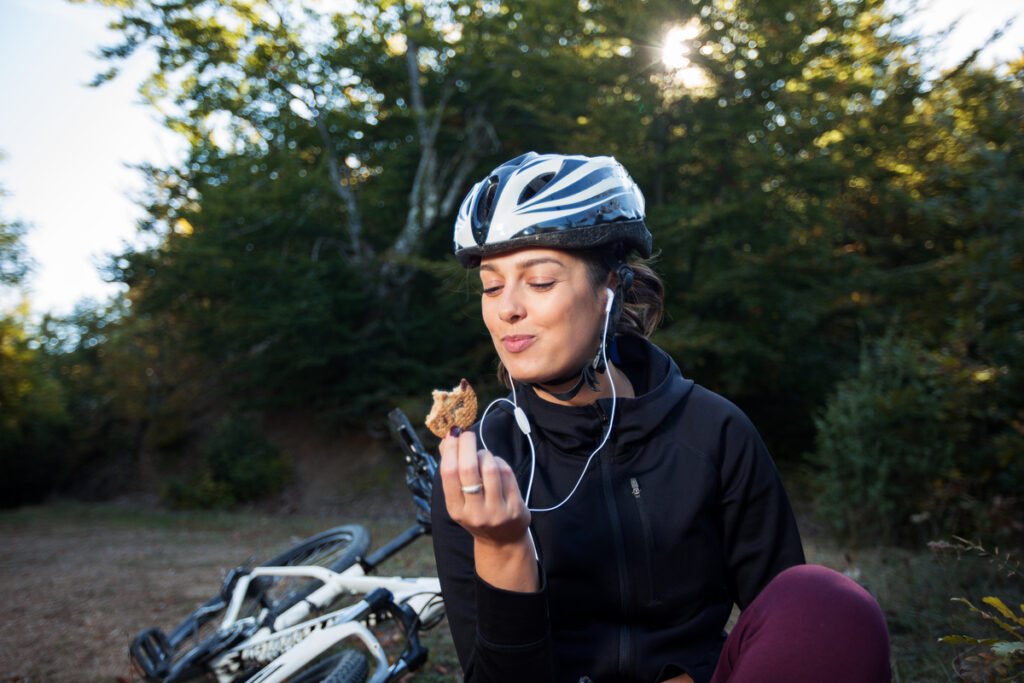
As you can imagine, professional cyclists spend a lot of time riding their bikes. As well as spending 6 to 8 hours on training sessions, cyclists also need to eat low-calorie diets. Diet is one of the most important aspects of being an athlete.
While training for your respective sport is fundamental to success, it’s diet that can affect how strong your body can become and how much stamina you can build.
Long training sessions and a low-calorie diet are two main ingredients for a catabolic diet. Therefore, the amount of muscle mass cyclists can gain is limited due to what they eat.
Without a large source of protein and calories, it doesn’t matter how much physical activity you perform. Muscles just will not grow much.
Yes, many cyclists will develop larger quadriceps and calf muscles but the extent of this muscle mass can also be attributed to how good their genetics are for muscle growth.
That being said, large, muscular legs will be a hindrance to long-distance cyclists. You don’t see many with bulging quads or calves. The truth of the matter is, without much weight, it’s very hard to develop much muscle mass.
For a rough idea of a professional cyclist’s daily eating plan, take a look at this example from britishcycling.org:
- Breakfast: A bowl of porridge/eggs
- Mid-morning snack: Fruit and yogurt
- Lunch: A wholemeal bread sandwich/jacket potato/a plate of pasta
- Mid-afternoon snack: A piece of fruit and a packet of unsalted nuts
- Evening meal: A piece of chicken, fish, or other lean meats with either rice, pasta, or vegetables
- Before bedtime snack: One glass of a milky drink
As you can see, this is not a diet to build muscle with. You would require more energy-boosting foods and protein to develop increased muscle mass. But, for the sport of cycling, this example should be sufficient depending on gender and body size.
The short answer is, yes. Bodies grow as units so if you put on weight, it will affect all parts of the body.
If you train your arm muscles, the growth in this region will be limited by how much you weigh.
For instance, even if you’re six foot one, it doesn’t necessarily mean you are going to be “jacked.” If you’re this height but only weigh 140 pounds, it will be pretty difficult to develop very large, muscular arms that are over 15 inches in width.
Even if that is the only muscle group you are focusing on, without adding more weight, you will struggle to build significant muscle mass.
Of course, if you perform strength training exercises on specific muscle groups, they will grow, even without a significant increase in body weight.
However, the gains you see early on will tend to plateau eventually. If you want to build a substantial amount of muscle in your body, you would generally need to gain more bodyweight.
In Summary
On the whole, road cyclists and professional cyclists are very skinny because of the type of sport they are performing and the muscles they do and do not use.
Thanks to intense and long training sessions, strict diet plans, and limited muscle use, cycling tends to result in leaner bodies.
To excel in most sports, sacrifices have to be made. Cycling is no different. For recreational cyclists, however, you can build some arm muscles by performing strength exercises and having a protein-rich diet.
Cycling may not give you a muscular physique but it’s certainly a fun and enjoyable way of living a healthy lifestyle.
- Melbourne Bike Share App: Short Review - February 7, 2022
- Cycling Rules In Melbourne - February 4, 2022
- Bike Sharing In Melbourne: What Are The Alternatives - February 4, 2022

